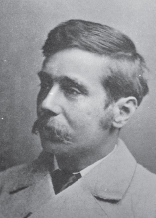Peer Editing
Chapter Opener
36
comment/peer review/proofread
Peer Editing
Many people get nervous when asked to play editor, though such requests come all the time: “Read this for me?” Either they don’t want to offend a friend or classmate with their criticisms or they have doubts about their own abilities. These are predictable reactions, but you need to get beyond them.
Your job in peer editing drafts is not to criticize other writers but to help them. And you will accomplish that best by approaching a project honestly, from the perspective of a typical reader. You may not grasp all the finer points of grammar, but you will know if a paper is boring, confusing, or unconvincing. Writers need this response.
And yet most peer editors in college or professional situations focus on tiny matters, such as misspellings or commas, and ignore arguments that completely lack evidence or paragraphs dull enough to make accountants yawn. Of course, spelling and punctuation errors are easy to catch. It’s much tougher to suggest that whole pages need to be redone or that a colleague should do better research. But there’s nothing charitable about ignoring these deeper issues when a writer’s grade or career may be on the line. So what should you do?
First, before you edit any project, agree on ground rules for making comments. It is painless to annotate electronic drafts since you don’t have to touch or change the original file. But writers may be more protective of paper copies of their work. Always ask whether you may write comments on a paper and then make sure that your handwriting is legible and your remarks are identified.
Peer edit the same way you revise your own work. As suggested in Chapter 35, pay attention to global issues first. (revise and edit) Examine the purpose, audience, and subject matter of the project before dealing with its sentence structure, grammar, or mechanics. Deal with these major issues in a thoughtful and supportive written comment at the end of the paper. Use marginal comments and proofreading symbols (see Use proofreading symbols) to highlight mechanical problems. But don’t correct these items. Leave it to the writer to figure out what is wrong.
Be specific in identifying problems or opportunities. For instance, it doesn’t help a writer to read “organization is confusing.” Instead, point to places in the draft that went off track. If one sentence or paragraph exemplifies a particular problem — or strength — highlight it in some fashion and mention it in the final comment. Nothing helps a writer less than vague complaints or cheerleading:
You did a real good job, though I’m not sure you supported your thesis.
It’s far better to write something like the following:
Your thesis on the opening page is clear and challenging, but by the second page, you have forgotten what you are trying to prove. The paragraphs there don’t seem connected to the original claim, and I don’t find strong evidence to support the points you do make. Restructure these opening pages?
Too tough? Not at all. The editor takes the paper seriously enough to explain why it’s not working.
No passion in the world is equal to the passion to alter someone else's draft.

Library of Congress, Prints and Photographs Division, LC-
Offer suggestions for improvement. You soften criticism when you follow it up with reasonable suggestions or strategies for revision. It’s fine, too, to direct writers to resources they might use, from better sources to more effective software. Avoid the tendency, however, to revise the paper for your classmate or to recast it to suit your own opinions.
Praise what is genuinely good in the paper. An editor can easily overlook what’s working well in a paper, yet a writer needs that information as much as any apt criticism. Find something good to say, too, even about a paper that mostly doesn’t work. You’ll encourage the writer, who may be facing some lengthy revisions. But don’t make an issue of it. Writers will know immediately if you are scraping bottom to find something to praise. Here’s a detailed comment at the end of a first draft that makes many helpful moves, from encouraging a writer to making quite specific criticisms.
Whit,
I liked your draft and the direction your paper is going. Your use of imagery throughout was spot-
Your thesis is clear and concise, but as we discussed, perhaps you can do away with the low-
I do think your paper could benefit from more personal ethos: Say you are an avid film watcher and a humble fan of the movie so that the reader can trust your opinion easily.
In terms of style, I found some of your sentences to be long and overbearing. Switch up short and long sentences so the reader can move through the paper easily.
I think that’s it. I can’t wait to read the final draft of this paper, because I know it’s going to be good. Good luck.
— Stefan
Use proofreading symbols. Proofreading marks may seem fussy or impersonal, but they can be a useful way of quickly highlighting some basic errors or omissions. Here are some you might want to remember and use when editing a paper draft.

|
Word misspelled (not a standard mark, but useful) |

|
Check for error here (not a standard mark) |

|
Delete marked item |

|
Close up space |

|
Insert word or phrase |

|
Insert comma |

|
Insert quotation marks |

|
Capitalize |

|
Insert period |

|
Transpose or reverse the items marked |

|
Begin new paragraph |

|
Insert or open up space |

|
Italicize word or phrase |
Keep comments tactful. Treat another writer’s work the way you’d like to have your own efforts treated. Slips in writing can be embarrassing enough without an editor tweeting about them.